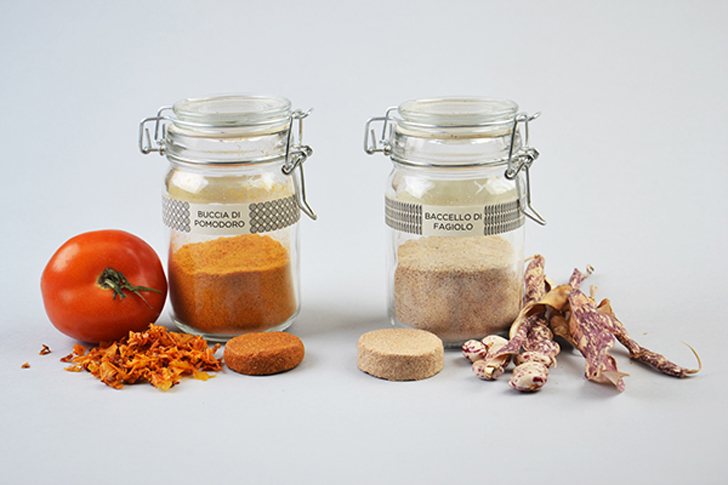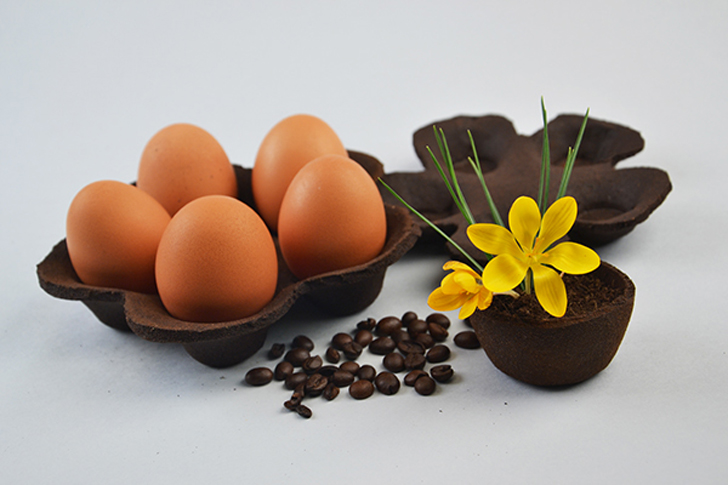One of the greatest, increasingly tapped, potentials of 3D printing is the ability to recycle waste into new objects. And, though there exist projects and products that take advantage of milk jugs, water bottles, car parts, and old prints as 3D printing materials, there’s still plenty of room for sustainability in the world of 3D printing and Italy-based designer Marina Ceccolini proposes another sustainable source for 3D printer feedstock in food waste.
Inspired by the rigidness of a dehydrated tangerine peel, the designer began creating her own potential 3D printing material called AgriDust. Ceccolini’s AgriDust is made from foods found in her local landfill: everything from coffee grounds to peanut shells, orange and lemon peels, tomato skins, and bean pods. Held together with potato starch, the compost is Ceccolini believes that, through a paste extruder, the material has the could be 3D printed into new objects. The 64.5% waste/35.5% binder composition could, the designer proposes, limit the plastic waste generated by 3D printers.
The biodegradable material might be used to produce temporary items, which, could, after use, be returned to the compost heap – things like planters or disposable packaging. She tells Fast Co., “These technologies are mainly used to create the first prototypes and objects that serve only for a first phase of the study. I don’t want to eliminate the use of plastic, because in some sectors that is unthinkable, but in the case of disposable products you might start to think and act differently.”
Not only would such an Earth-friendly material help reduce our dependence on oil for the production of plastics, but it would give new life to food waste that might not otherwise be composted. The designer continues, “The waste recovered in this way will return in the form of biological nutrient to the earth, but before that it can carry out other functions such as pots for plants and packaging going to decrease the use of plastic and cost required for landfilling. Now, most fruit and vegetable waste is not used as compost, and unfortunately it is easier to throw the waste in a landfill that in a compost bin. This technique can retrieve the value of the food.”
AgriDust is still in the prototyping stages, but Ceccolini says that she will continue to explore the actual implementation of its use in 3D printing. She tells Fast Co., “The project was not born to be just a concept,” she says. “The idea is to take it forward with an expert in this sector.” There’s no reason not to think that it will work, if not in a paste extrusion 3D printing system, then it would likely be viable with powder bed/inkjet 3D printing, the same process that is used for printing sugar structures with the ChefJet series from 3D Systems. But you don’t have to wait for 3D Systems to start printing with food waste. If you’re interested in building your own powderbed printer and giving Ceccolini a hand, engineer Yvo de Haas can tell you how.






